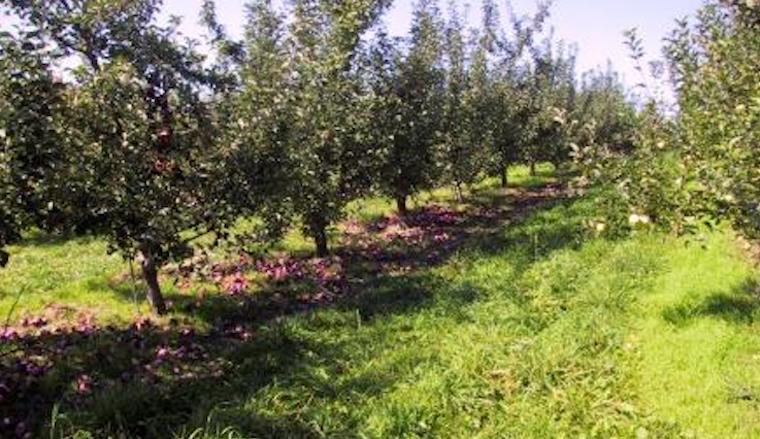The excessive cost to small businesses of government regulations is a topic we’ve rarely seen explained as well in a non-business, consumer-oriented medium as this recent article in the New York Times. It is an in-depth look at the negative impact of federal and state regulations on an apple orchard reported by Steve Ederdec. He spent time during the fall (2017) apple harvest season at Indian Ladder Farms, a fifth-generation family direct-to-consumer operation near Albany, NY, owned and operated by the Ten Eyck family. The fall apple harvest season accounts for about half of its annual revenue.

Source: Apple Ladder Farms
Small business “regulation fatigue” is not an easy topic to explain to someone who has never run a company with no administrative staff dedicated to big-business oriented restrictions and regulations.
Quote (NYTimes.com):
(Last) fall (2017), amid the rush of commerce — the apple harvest season accounts for about half of Indian Ladder’s annual revenue — federal investigators showed up. They wanted to check the farm’s compliance with migrant labor rules and the Fair Labor Standards Act, which sets pay and other requirements for workers. Suddenly, the small office staff turned its focus away from making money to placating a government regulator. The investigators arrived on a Friday in late September and interviewed the farm’s management and a group of laborers from Jamaica, who have special work visas. The investigators hand-delivered a notice and said they would be back the following week when they asked to have 22 types of records available. The request included vehicle registrations, insurance documents, and time sheets — reams of paper in all.
Over the next several days, the Ten Eyck family, which owns the farm, along with the staff devoted about 40 hours to serving the investigators, who visited three times before closing the books. “It is terribly disruptive,” said Peter G. Ten Eyck II, 79, who runs the farm along with a daughter and son. “And the dimension that doesn’t get mentioned is the psychological hit: They are there to find something wrong with you. And then they are going to fine you.”
According to Ederdec, “This is life on the farm — and at businesses of all sorts. With thick rulebooks laying out food safety procedures, compliance costs in the tens of thousands of dollars and ever-changing standards from the government and industry groups, local produce growers are a textbook example of what many business owners describe as regulatory fatigue.”
Over the past five decades, apple grower Eyck said there has been an unending layering of new rules and regulations on his farm of over 300 acres, as more government agencies have taken an interest in nearly every aspect of growing food, and those agencies already involved have become even more so. “If it isn’t pest poisons and pesticides, then it is food safety,” said Eyck, suggesting that one rule maker seemingly tries to outdo the last. “And they come in waves.”
Researchers at the Mercatus Center, an economic think tank at George Mason University, says apple orchards are facing a growing federal regulatory burden. Quantifying that burden is difficult, but using a computer algorithm that analyzes regulations through keyword searches, researchers from the center’s estimated
5,000 | Restrictions and rules directly relevant to orchards in 17 federal regulations (Via: Mercatus Center date analyzed by New York Times.)
Agencies that generate the most restrictions related to apple orchards like Indian Ladder Farms:
- EPA (Environmental Protection Agency)
- OSHA (Occupational Safety and Health Administration)
- USDA (United States Department of Agriculture)
- State and local offices like ACDOH (Albany County Department of Health).
Read more: NYTimes.com “When Picking Apples on a Farm With 5,000 Rules, Watch Out for the Ladders”
iStock
